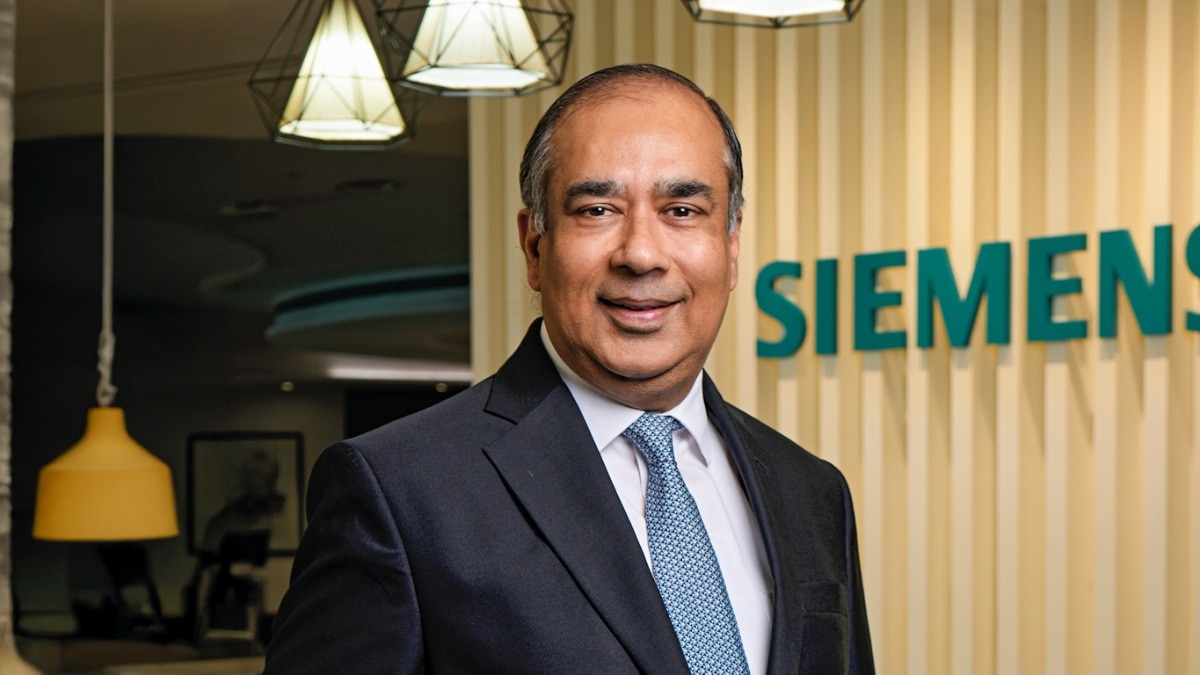
A leading hospitality chain with high electricity consumption—energy accounts for roughly 40% fixed cost of a hotel—approached Siemens for help. The global technology leader delivered average energy savings of around 13% while substantially reducing emissions.
By combining the real and digital worlds and harnessing the transformative power of technologies such as artificial intelligence, Siemens is helping customers accelerate their path to sustainability, while reducing the environmental footprint. It is the winner in the heavy electrical category in manufacturing.
“We have made significant progress towards net zero. Our goals include a 90% reduction in emissions from own operations and a 20% reduction in emissions in the supply chain (both by 2030), apart from net zero by 2050,” says Sunil Mathur, Managing Director and Chief Executive Officer, Siemens Ltd.
The Indian entity of the German multinational technology conglomerate is primarily using levers such as electrification of manufacturing processes, transitioning to a cleaner energy mix at source and enhancing energy efficiency in consumption. The Siemens Xcelerator platform supports customers across utilities, industries and infrastructure on this journey.
As monitoring decarbonisation measures is important, the company’s glide path is regularly monitored at two levels. First, by an apex Sustainability Committee, comprising Managing Director, Executive Director and business management. Second, by the Board of Directors. This comprehensive governance structure underscores Siemens’ commitment to sustainability, integrating leadership, cross-functional collaboration and rigorous oversight to drive meaningful environmental impact.
Recognising that most emissions occur along the value chain, Siemens has been working with its supplier community to enrol and undertake unique Carbon Web Assessments to ensure transparency. The ‘Carbon Reduction @ Supplier’ initiative assists suppliers in setting targets and making action plans to mitigate their climate impact.
“About 94% of eligible suppliers have completed the assessment. We have achieved over 65% transparency. The suppliers undergo regular training and audits of which around 300 have been completed so far. Our supply chain team is prioritising efforts by focusing on the top 100 suppliers, ranging from services to commodities, with a high share of emissions. In commodities, the top 15 suppliers contribute more than 50% emissions,” says Mathur. The company’s primary focus is to target suppliers’ Scope 1 and 2 emissions, helping them improve their energy mix. However, the bigger challenge is Scope 3 emissions arising from primary commodities such as copper, aluminium and steel. The team tracks industry developments in use of fuels and, where possible, substitutes them by low carbon alternatives.
The programmes include conversion to low-carbon modes such as air-sea freight, road-rail and diesel-electric. Among the measures for Scope 3 (downstream), more than 90% of Siemens’ business enables customers to achieve a positive sustainability impact.
By combining the real and the digital worlds, Siemens supports its customers through key impact areas of decarbonisation and energy efficiency, resource efficiency and circularity, and people-centricity and societal impact.
In 2024, Siemens announced an investment of Rs 333 crore in its Goa factory to bring to market the state-of-the-art Gas Insulated Switchgear and Clean Air GIS technologies. These products will help customers in sectors such as data centres, metro rail, oil & gas, steel, and transmission & distribution meet sustainability goals.
Both the factories, designed as per the LEED Gold standards, are carbon neutral and water positive, using various sustainable technologies, including PV solar, microgrid, EV charging, battery energy storage systems and rainwater harvesting, and will be built with recycled materials and using circular construction techniques. LEED is Leadership in Energy and Environmental Design.
While in the long run, sustainable investments deliver benefits, they entail initial investments and cash outflows. “The key challenge lies in judiciously balancing both imperatives. At Siemens, we believe that what is right for the environment and society is also good for the business, and this guides our decisions. Our customers are becoming increasingly conscious of sustainability. Many of them have begun to grade suppliers based on their ESG performance. This is a positive sign. This trend will continue,” says Mathur.
Richajourno